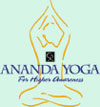Keyword: Continuing Classes
ORIGINAL QUESTION:
From: Holly Lovejoy
I’ve been reaching beginning level classes long enough now that people are asking for continuing level classes. Does anyone have suggestions or routines that might help me?
Thanks – Holly Lovejoy
ANSWERS:
From: Bliss Wood, AYTT 1999
Hi Holly,
Continuing classes are fairly easy to move into. I would suggest that you continue your practice by going to yoga classes and being "the student" in addition to your teaching schedule. I have done this, and have found that there is always something to learn from another teacher. This also keeps me in "beginners’ mind" so that I don't get "stuck" in doing things the same way. This also gives me new ideas for presenting my classes. Also, talk to other teachers and find out how they teach and what their favorite postures are and why. I also take time to write out my classes and seminars. As I do this, I do the postures so as to feel them for myself which in turn helps me to convey the feelings, etc. that my students might feel.
I hope this helps you. Good luck with your teaching!
Bliss Wood
From Doug Andrews:
Dear Holly,
I believe there are two directions for you to head if you are to teach at a deeper or continuing level. One direction is to deepen the spiritual side of the asanas. Do you also teach meditation? You can go back to the 14 steps lessons and refresh yourself on the essentials of the various chapters on postures and their corresponding chapters on meditation. Reading these during your off-teaching times will help you find the deeper levels of the postures that your students already know at a beginning level. Find some more challenging pranayama techniques (also in the 14 steps) and share those as part of your class. Try ending your class with a guided hong-sau meditation...just a few minutes can change everything.
From that same source you will also find poses that are more challenging such as supta-vajrasana, dhanurasana and sarvamghasana and halasana. Create a new routine for your own practice until you feel comfortable with the deeper poses. Perhaps borrowing routines from Ananda Yoga for Higher Awareness would be a good idea.
Finally, consider going to some outside sources. Yoga Journal and Yoga International often have different teachers writing and demonstrating poses. Some of the Rodney Yee videos (i.e. Strength & Flexibility) are good for getting you out of your same old routine. I will often draw on these sources from outside Ananda, bring them back to my own practice, work with them to find the qualities of energy and spirit (often overlooked by other teachers) and find how to express them to and share them with others.
I hope this helps.
Blessings,
Doug Andrews
Ananda Sangha of the Redwoods
From Susan Hayes:
As for your desire to teach a continuing yoga class, don't ever worry about keeping beginners mind. Your students will appreciate it.
If it's just your repertoire that you're feeling stuck over, you can start by making the students hold the postures for longer periods of time. (Yin yoga is this type of yoga.)
Other suggestions are: the salabasana series (first with right arm and left leg raised; then opposite arm and leg raised; then with Superman arms and legs; then with airplane (shoulder-level) arms; then classic salabasana with hands down by hips). You can also do a bow-pose flow, going from tabletop into raised-leg or half-bow (let me know if you don't know how to do that one), to balasana; then into full dhanurasana; then back into balasana.
You can pair up some standing postures that are compatible and a bit more complex: vrikasana followed by natarajasana; trikonasana followed by pavritti (reversed) trikonasana. You can have the students do one pose, such as boat pose (navasana) in a whole series of variations (with straps around the soles of the feet; then without straps; then with partners).
You can always do sun salutations, nice and slowly, throwing in variations each time (rather than doing the same surya namaskar sequence over and over again). You can throw in a different sort of lunge each time (including warrior I); or, throw in pigeon (starting from downward dog, and then going down into tabletop). Or, ask them to go from plank, into chattaranga, then into cobra; or have them do sphinx instead of cobra, and then have them look over each shoulder (Lilias Folan calls that one "twisted sphinx"). While in downward dog, have them walk the dog, or have them raise one leg at a time into the air from downward dog (keeping both hips level); then have them bend the raised leg's knee and bring the foot in toward the buttock, then straightening the leg, lowering it down, and then switching to the other leg. You can ask them to do push-ups: from downward dog into dolphin and back and forth about 4 or 5 times. That's a really good workout!
Good luck!
Susan Hayes
|







